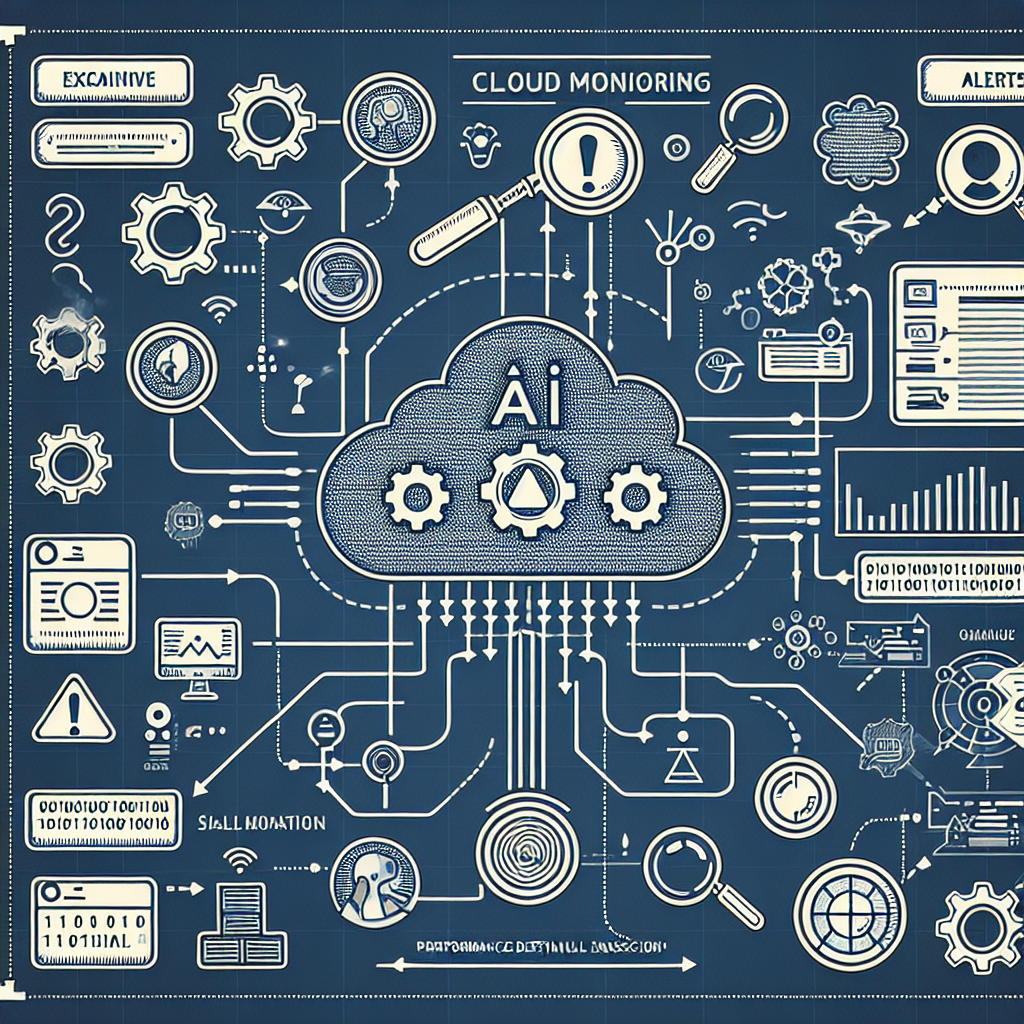In today’s fast-paced digital world, businesses rely heavily on cloud computing to store, manage, and process their data. With the increasing complexity of cloud environments, monitoring and optimizing performance has become a critical task for IT teams. This is where AI-driven cloud monitoring comes into play, offering a powerful solution to ensure optimal performance and uptime.
AI-driven cloud monitoring utilizes artificial intelligence and machine learning algorithms to analyze massive amounts of data in real-time, detect patterns, and make informed decisions to optimize cloud performance. By using AI, organizations can proactively identify and resolve issues before they impact the end-user experience, leading to improved efficiency, cost savings, and overall customer satisfaction.
Key Benefits of AI-Driven Cloud Monitoring
1. Proactive Monitoring: Traditional monitoring tools often rely on predefined thresholds and rules to alert IT teams of potential issues. AI-driven cloud monitoring takes a more proactive approach by analyzing historical data, detecting anomalies, and predicting potential issues before they occur. This proactive monitoring helps organizations avoid downtime and performance degradation, leading to improved reliability and user experience.
2. Automated Remediation: AI-driven cloud monitoring can automatically identify and resolve common issues without human intervention. By leveraging machine learning algorithms, AI can learn from past incidents and apply that knowledge to future situations, enabling faster and more accurate resolution of problems. This automated remediation reduces the burden on IT teams and allows them to focus on more strategic tasks.
3. Scalability: As organizations scale their cloud infrastructure, monitoring becomes increasingly complex and resource-intensive. AI-driven cloud monitoring can effortlessly scale with the growing demands of the business, analyzing vast amounts of data and providing actionable insights in real-time. This scalability ensures that organizations can effectively monitor their cloud environments regardless of size or complexity.
4. Cost Optimization: Cloud resources can be expensive, and organizations must optimize their usage to control costs. AI-driven cloud monitoring can analyze resource utilization, identify underutilized resources, and recommend cost-saving measures. By optimizing resource allocation and usage, organizations can reduce their cloud spending while maintaining optimal performance.
5. Predictive Analytics: AI-driven cloud monitoring can leverage predictive analytics to forecast future trends and performance issues. By analyzing historical data and patterns, AI can predict potential bottlenecks, capacity constraints, or security vulnerabilities, enabling organizations to proactively address these issues before they impact operations. This predictive capability helps organizations stay ahead of the curve and ensure a seamless user experience.
Common Use Cases of AI-Driven Cloud Monitoring
1. Performance Monitoring: AI-driven cloud monitoring can analyze performance metrics such as CPU utilization, memory usage, network latency, and application response times to identify performance bottlenecks and optimize resource allocation. By monitoring performance in real-time and detecting anomalies, organizations can ensure that their cloud applications deliver optimal performance to end-users.
2. Security Monitoring: AI-driven cloud monitoring can enhance security by analyzing logs, detecting unusual patterns, and identifying potential security threats in real-time. By leveraging AI to monitor security events, organizations can quickly respond to incidents, mitigate risks, and protect sensitive data from cyber threats.
3. Cost Optimization: AI-driven cloud monitoring can analyze cost-related metrics such as resource utilization, billing data, and pricing models to identify opportunities for cost optimization. By analyzing cost trends, AI can recommend cost-saving measures such as resizing instances, implementing reserved instances, or adopting spot instances to reduce cloud spending.
4. Capacity Planning: AI-driven cloud monitoring can predict future capacity requirements based on historical data, trends, and usage patterns. By analyzing capacity metrics such as storage usage, network traffic, and application demand, AI can recommend scaling strategies to ensure that organizations have the right resources in place to meet growing demand.
5. Compliance Monitoring: AI-driven cloud monitoring can help organizations maintain compliance with industry regulations and best practices by analyzing audit logs, monitoring access controls, and detecting policy violations. By leveraging AI to continuously monitor compliance, organizations can ensure that their cloud environments meet security and regulatory requirements.
FAQs
1. What is AI-driven cloud monitoring?
AI-driven cloud monitoring utilizes artificial intelligence and machine learning algorithms to analyze data, detect anomalies, and optimize cloud performance in real-time. By leveraging AI, organizations can proactively monitor their cloud environments, identify issues before they occur, and optimize resource allocation for optimal performance.
2. How does AI-driven cloud monitoring differ from traditional monitoring tools?
Traditional monitoring tools often rely on predefined thresholds and rules to alert IT teams of potential issues. AI-driven cloud monitoring takes a more proactive approach by analyzing historical data, detecting patterns, and predicting potential issues before they occur. This proactive monitoring enables organizations to avoid downtime, optimize performance, and improve user experience.
3. What are the key benefits of AI-driven cloud monitoring?
Some key benefits of AI-driven cloud monitoring include proactive monitoring, automated remediation, scalability, cost optimization, and predictive analytics. By leveraging AI, organizations can monitor performance, security, cost, capacity, and compliance more effectively, leading to improved efficiency, cost savings, and overall customer satisfaction.
4. What are some common use cases of AI-driven cloud monitoring?
Some common use cases of AI-driven cloud monitoring include performance monitoring, security monitoring, cost optimization, capacity planning, and compliance monitoring. By applying AI to these use cases, organizations can enhance performance, security, cost efficiency, capacity management, and compliance with industry regulations and best practices.
5. How can organizations implement AI-driven cloud monitoring?
Organizations can implement AI-driven cloud monitoring by selecting a cloud monitoring platform that offers AI capabilities, integrating monitoring tools with AI algorithms, and configuring monitoring policies and alerts based on business requirements. By leveraging AI-driven cloud monitoring, organizations can optimize performance, reduce costs, and enhance security in their cloud environments.
In conclusion, AI-driven cloud monitoring is a powerful solution for organizations looking to ensure optimal performance, scalability, and security in their cloud environments. By leveraging artificial intelligence and machine learning algorithms, organizations can proactively monitor, analyze, and optimize their cloud infrastructure to deliver a seamless user experience and drive business success.

